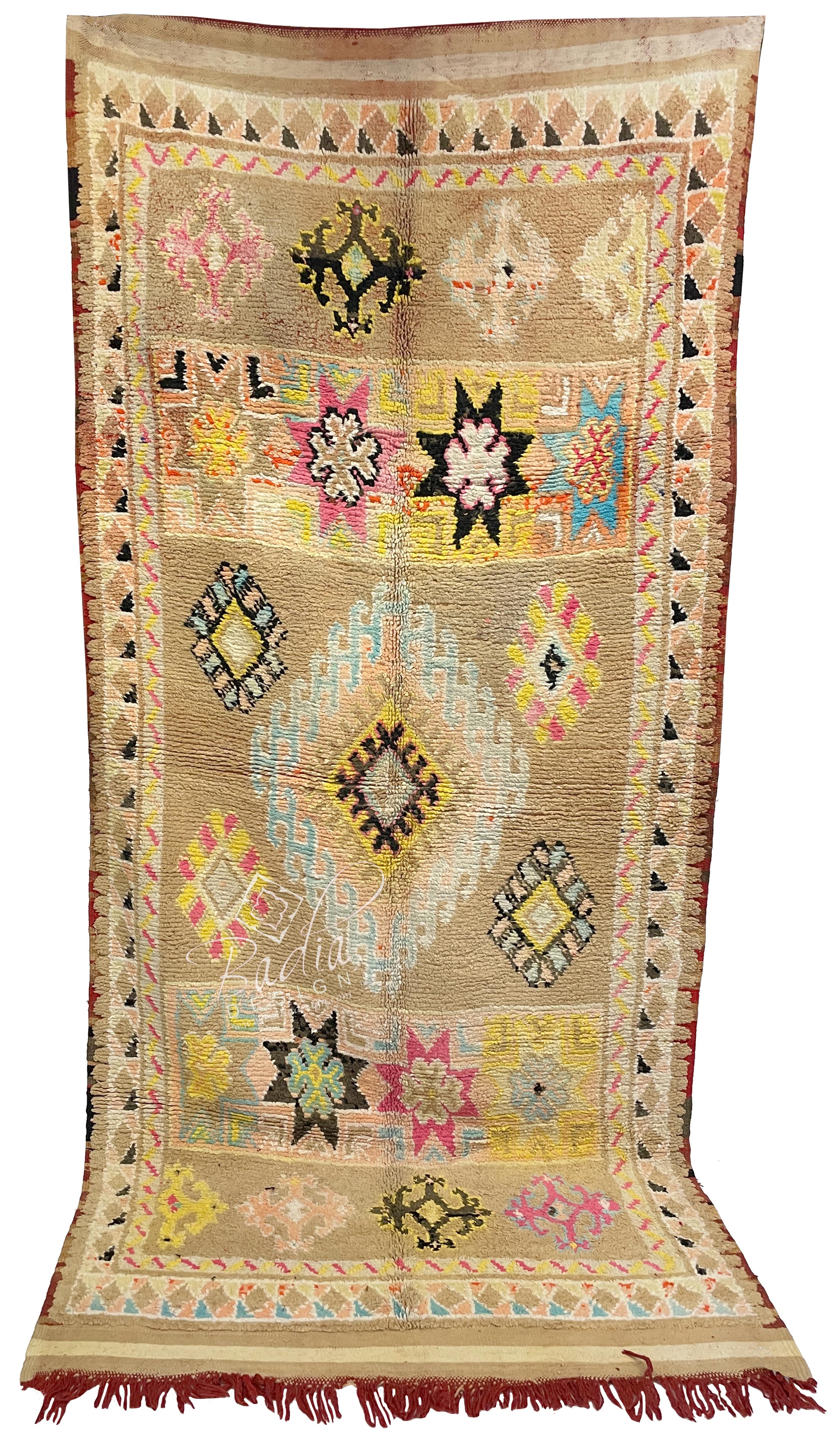Handmade Moroccan Berber Rugs
Handmade Moroccan Berber Rugs
Blog Article
Moroccan Berber Rugs: A Fusion of History, Artistry, and Timeless Elegance
These rugs have enchanted people across the globe with their deep cultural roots, remarkable artistry, and timeless design. Whether you are furnishing a comfortable living room, a modern office space, or a upscale resort, these rugs serve as more than just functional items—they are pieces of art with a story to tell. This guide delves into the fascinating history of Moroccan Berber rugs, the detailed artistry involved in their production, their exceptional longevity, and practical tips for styling them in modern spaces.
These rugs originated with the ancient tribal artisans of North Africa, dating back thousands of years. The Berbers, with their rich cultural heritage, crafted unique weaving methods as a practical response of their nomadic lifestyles and diverse climates.
The symbols and motifs in these rugs convey meanings that are unique to the tribe or family of origin. These symbols frequently represent protection, fertility, or the natural environment, making each rug a highly meaningful creation. Originally, these rugs were crafted for utilitarian purposes, such as providing warmth during harsh winters in the Atlas Mountains or acting as soft bedding in arid desert regions.
During the 20th century, these rugs were introduced to global design by architects such as Le Corbusier and Frank Lloyd Wright, who used them in prestigious projects. Today, their enduring charm and cultural richness make them a top pick for interior designers and art enthusiasts worldwide.
The production of Moroccan Berber rugs is an elaborate art form passed on through generations. This craftsmanship embodies a deep connection to tradition and artistry.
These rugs are made from materials like wool, camel hair, and cotton, renowned for their durability and comfort. Wool is especially prized for its soft texture, resilience, and ability to retain warmth. Artisans often hand-spin the wool, giving each rug a unique look and feel.
Weaving these rugs is an elaborate process, requiring great patience and effort on traditional looms. The knotting style, from Beni Ourain’s plush textures to Azilal’s tighter weaves, impacts both durability and design.
Artisans rely on natural dyes from plants and minerals to produce the vivid tones seen in Berber rugs. Neutral shades dominate Beni Ourain designs, while brighter Azilal and Boucherouite pieces feature striking colors like red, blue, and yellow.
One of the most celebrated features of Moroccan Berber rugs is their exceptional durability. As a result, they’re an excellent fit for homes and offices.
Berber rugs owe their longevity to the excellent quality of their natural fibers. Wool’s elasticity and stain resistance contribute to their durability.
Taking care of these rugs is straightforward. Regular vacuuming, spot cleaning with mild detergent, and occasional professional cleaning will keep them looking pristine for years.
Styling Moroccan Berber Rugs in Contemporary Interiors
Adding Moroccan Berber rugs to modern spaces is simpler than it seems. These rugs' adaptability allows them to suit various aesthetics, including minimalist and bohemian styles.
1. Anchor a Living Room
A large Beni Ourain rug can serve as the focal point of your living area. The rug’s muted tones and clean lines bring cohesion to the space and exude coziness.
2. Add Color to Neutral Spaces
In minimalist or neutral spaces, a colorful Azilal or Boucherouite rug can add a bold, eye-catching accent. These rugs work particularly well in neutral-toned rooms, where they serve as a focal point.
3. Combine Rugs for Depth and Style
To create a warm, layered look, place a check here smaller Berber rug atop a larger rug made from natural fibers like jute or sisal. This pairing enhances texture and emphasizes the unique patterns of the Berber rug.
4. Elevate the Look of Offices and Workspaces
Moroccan Berber rugs are perfect for adding elegance and warmth to professional spaces, including offices and lounges. The artisanal craftsmanship of these rugs radiates authenticity and refinement.
5. Display Moroccan Berber Rugs as Decorative Art
Certain Moroccan Berber rugs are so beautiful that they function wonderfully as wall art. Displaying a Berber rug on a wall highlights its intricate design and cultural significance.
Reasons to Invest in Moroccan Berber Rugs
For both homeowners and businesses, Moroccan Berber rugs represent a blend of practicality, aesthetics, and cultural significance. These rugs are built to last, and their classic designs remain relevant despite evolving decor trends.
Eco-Friendly and Ethical Craftsmanship
Berber rugs are often made with environmentally responsible and sustainable techniques. Purchasing these rugs helps preserve artisan traditions while enriching your decor with sustainable beauty.
Increasing Value Over Time
Vintage or unique Moroccan Berber rugs tend to grow in worth over the years. These rugs serve as both decorative items and investment-worthy collectibles.
 Report this page
Report this page